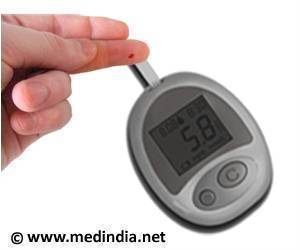Tourette’s Awareness Day is celebrated on 7th June every year. It aims to create awareness about Tourette’s syndrome among the general public, as well as raise funds to improve the lives of Tourette’s patients.
- Tourette’s Awareness Day is celebrated every year on 7th June
- It aims to generate awareness about Tourette’s syndrome, as well as raise funds
- Fundraising will help to improve the lives of needy Tourette’s patients
Read More..
Features of Tourette’s Syndrome
Attention-deficit hyperactivity disorder (ADHD), autism, and obsessive-compulsive disorder as well as (OCD) may also be associated with TS.Symptoms include physical and vocal tics. The former may involve mouth pouting, mouth opening, head nodding, blinking, twirling, or grimacing, while the latter is characterized by grunting, throat clearing, sniffing, or coughing sounds.
The treatment essentially involves psychobehavioral therapies such as psychoeducation for the patients to gain emotional stability. Medications include certain neuroleptic drugs such as haloperidol which help to suppress severe forms of TS, which currently has no cure.
How is Tourette’s Awareness Day Celebrated?
Tourette’s Awareness Day is celebrated through various events and activities, some of which are briefly highlighted below:- Awareness Campaigns: These are always very effective in igniting public interest in the condition. For example, Tourette's Action, a charity organization based in Hampshire, UK is conducting a campaign called Move for Tourette’s which encourages people to “get moving” by participating in sponsored physical challenge events such as walkathons, marathons, triathlons, swimming, cycling, and many more
- Public Lectures: Popular lectures by renowned neurologists and psychiatrists on the topic of Tourette’s syndrome are very effective in enlightening people about the condition, as well as clearing many misconceptions. These talks also help to create a better understanding and empathy for those suffering from Tourette’s
- Social Media Publicity: This is one of the most powerful technologies for reaching the maximum number of people in the shortest time. Posting information, stories, photos, and videos related to TS on popular social media sites such as Facebook, Twitter or Instagram can reach millions of people in no time.
- Illumination of Landmarks: Lighting-up prominent landmarks is a novel way to generate awareness and is very appealing to the eyes too. For example, the world famous Niagara Falls and the CN Tower in Toronto, Canada are being lit-up in ‘teal’, the awareness color for TS, on the occasion of Tourette’s Awareness Day
- Art Exhibitions: Displaying artwork by Tourette’s patients is a splendid way of showcasing their talents and generating awareness about the condition. Additionally, these events will give the Tourette’s patients much encouragement and pleasure, as well as raise money from the sales of the artwork
- Fundraising: There are many ways to raise funds. Some of these include cake sales, coffee mornings, quiz nights, sponsorships for sporting events, proceeds from musical performances, or through online campaigns
- Wearing ‘Teal’: The official color for Tourette’s is ‘Teal’. Therefore, wearing something of this color, such as a T-shirt, wristband, awareness ribbon, lapel pins, buttons, or shoes, will not only show support for Tourette’s patients, but also raise funds from the sales for improving their lives
History of Tourette’s Syndrome
The first recorded Tourette’s patient was Mary Hall of Gadsden, who was diagnosed in 1663 by Dr. William Drage, an English physician and apothecary. But it was Dr. Georges Gilles de la Tourette in 1885, who first described in great detail a cohort of cases, which made him famous and earned him a permanent place in the annals of Medicine.Tourette’s Syndrome: Facts & Figures
- 1 percent of children aged 5-19 years have TS with varying severity
- 300,000 children and adults have TS in the UK
- 138,000 children aged 6-17 years suffer from TS in the USA
- 200,000 Americans suffer from the most severe form of TS
- Over one-third of Tourette’s patients also suffer from OCD
- First symptoms of TS usually appear in childhood between 5-9 years of age
- Tics are regarded as the ‘tip of the iceberg’, with many underlying problems
- Tics can increase or decrease in frequency, number, complexity, and severity
- Prevalence of tics is 4.4 percent in boys and 1.1 percent in girls
- 10 percent of Tourette’s patients have the swearing tic or coprolalia
- Tourette’s syndrome is not caused by bad parenting or abuse
- 86 percent of children with TS also suffer from the following co-morbid conditions:
- ADHD – 63 percent
- Anxiety – 49 percent
- Learning difficulties – 47 percent
- Autism – 35 percent
- Speech problems – 29 percent
- Intellectual disability – 12 percent
Latest Research on Tourette’s Syndrome
Some of the latest developments in the area of scientific research on Tourette’s are briefly highlighted below:- Genetic Basis of Tourette’s Syndrome: A very recent major genetic study has confirmed that many genes contribute to the risk of developing TS. The study was led by scientists at the Massachusetts General Hospital, with active collaboration from other US universities. The study has been published in the American Journal of Psychiatry.
- Medicinal Cannabis for Treating Tourette’s Syndrome: A clinical trial is ongoing in Australia, which is evaluating the effectiveness of medicinal cannabis (marijuana) for treating TS. The trial is being conducted by Wesley Medical Research in Queensland, with support from the Lambert Initiative at the University of Sydney, Australia
- App for Tourette’s Patients: The Tourette Syndrome Association of Australia in collaboration with Torrens University Australia in Adelaide has developed a novel app called TAC’TICS that helps to educate and create awareness among children suffering from TS. The app has recently been launched in schools across Australia
Life of Tourette’s Patients
Tourette’s syndrome patients have a poor quality of life due to psychiatric conditions such as depression, anxiety, autism, ADHD and OCD, learning difficulties. The severity of the tics also reduces the quality of life of Tourette’s patients. Moreover, other complicating factors include delayed diagnosis, treatment by non-specialists, inadequate educational support, and lack of employment opportunities. There is also a lack of understanding and compassion for Tourette’s patients among doctors, teachers and the general public. Children suffering from Tourette’s find solace only in their parents. This is because the parents can only understand the child’s misery and try their level best to help the child cope with the condition.So, on Tourette’s Awareness Day, we should stop, think, and try to develop a deeper understanding of this highly misunderstood neuropsychiatric condition, so that we can look upon Tourette’s patients with greater compassion and empathy. Moreover, we should pool our resources together to raise funds to provide Tourette’s patients with the practical support and social acceptance they need to lead a fruitful and fulfilling life!
References:
- Stern JS, Burza S, Robertson MM. Gilles de la Tourette’s Syndrome and its Impact in the UK. Postgrad Med J. 2005; 81: 12-19.
- Tourettes Action - (https://www.tourettes-action.org.uk/)
- Data & Statistics on Tourette Syndrome - Centers for Disease Control and Prevention (CDC), USA - (https://www.cdc.gov/ncbddd/tourette/data.html)
- Yu D, Sul JH, Tsetsos F, Nawaz MS, Huang AY, Zelaya I, et al. Interrogating the Genetic Determinants of Tourette’s Syndrome and other Tic Disorders through Genome-Wide Association Studies. Am J Psychiatry. 2019; 176 (3): 217- (https://ajp.psychiatryonline.org/doi/10.1176/appi.ajp.2018.18070857)
- Australian First Medicinal Cannabis Trial for Tourette’s Syndrome - Wesley Medical Research, Queensland, Australia - (https://www.wesleyresearch.org.au/australian-first-medicinal-cannabis-trial-for-tourettes-syndrome/)
- 2019 TAC’TICS Program - Tourette Syndrome Association of Australia - (https://tourette.org.au/2019/03/tactics/)
Source-Medindia









